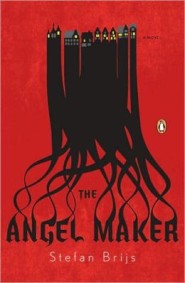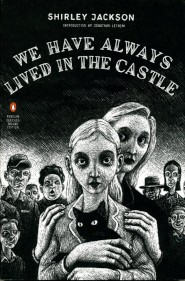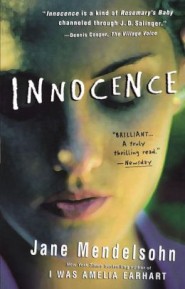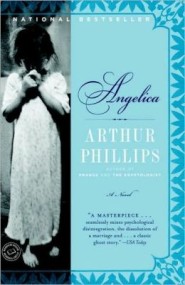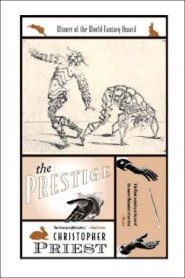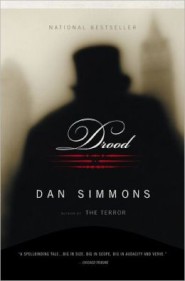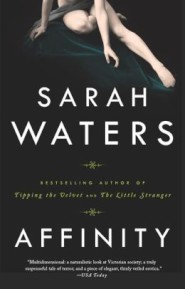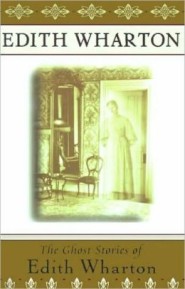I remember watching those horror movies as a kid. There was a Saturday morning feature called EIVOM. It took me years to figure out that was MOVIE spelled backward. hey, I was there for the monsters, not the spelling lesson. And boy, was I there. I loved the cheesy vampires, the horrible body paint, the ill-timed stab to the heart. I might have hid my eyes a few times, but I tuned in as often as possible. The creepy part wasn’t what stuck with me after the show was over. It was the idea of the creepy. The startling moment when IT happened, and the sad parts- the misunderstood freak, the lonely beast, the orphan child, the dumb ass who walked in the woods alone. At night. Under a full moon. i still like a good spooky tale, but now it has to have great acting. It has to touch me on at least three levels, with great photography, memorable lines and an atmosphere in which I can slip, seamlessly. In other words, I have to believe it could truly happen. Otherwise, it’s just laughable tricks, a big BOO! followed by silence. And who needs that?
If you’re looking for a good creepy read, check out these books recommended by Stephanie Feldman:
Here are some books that are smart and scary—just frightening enough for catharsis, and just exotic enough in their trappings that you’ll probably still be able to sleep at night, if you’re not lying awake thrilled by just how good they are.
1. The Angel Maker by Stefan Brijs – Frankenstein, one of the original horror novels, is the obvious comparison for this book about a doctor experimenting with creating life in a modern Belgian village. But this story about a brilliant pariah and his mysterious triplets evolves from a familiar fable to a psychologically and spiritually rich character study and exploration of alienation and love.
2. The Bloody Chamber by Angela Carter – Another classic source of Freudian creepiness: fairy tales. The original Grimms’ collection is filled with murderous parents, missing limbs, and gouged eyes. Angela Carter’s retellings of Bluebeard, Beauty and the Beast, Little Red Riding Hood (among others) go beyond spare allegory. They offer lush prose, vibrant heroines, and candid sexuality.
3. Specimen Days by Michael Cunningham – If you’re looking for another world, Michael Cunningham gives you three, and three genres to go with them: an industrial-era ghost story, a contemporary detective tale, and a futuristic science fiction story (complete with lizard-like aliens). While each story has its thrills, the characters that recur—and transform—through the cycle give the book its uncanny resonance. The stories are further united by Walt Whitman, who appears in person and through poetry in each, and Cunningham’s gorgeous prose.
4. We Have Always Lived in the Castle by Shirley Jackson – Everyone talks about The Haunting of Hill House. Stop doing that. Talk about this book instead. Sisters Merricat (for Mary Katherine) and Constance hide out in their family estate, ostracized by their neighbors since Constance was acquitted of murdering six other members of their family. But their isolation isn’t too last. Merricat’s narration is simultaneously appealing and chilling, making her an unforgettable character.
5. Innocence by Jane Mendelsohn – Any fan of horror movies can tell you that adolescence is prime subject matter for the genre. Jane Mendelsohn’s tale of Becket, a 14-year-old girl navigating a prep school clique and a relationship with her stepmother in wealthy Manhattan, is a poetic treatment of topics both poignant (coming of age) and pulpy (vampires).
6. Angelica by Arthur Phillips – Angelica welcomes us to the Victorian England half of the list. This novel about a family beset by a haunting—or of a family haunting itself—is told from several points of view, with each account subverting the previous. Tragedy bleeds into terror, and back again, as each narrator argues for a different source for the ghost: the supernatural, psychological repression, or gendered oppression.
7. The Prestige by Christopher Priest – Two best-friends-turned-rival magicians struggle to top one another as London’s master illusionist. The trick that will win the title: teleportation. There’s science and magic and twist after twist; the horror lies in what each man will do to win. (The Christopher Nolan film adaptation is pretty great, too.)
8. Drood by Dan Simmons – Wilkie Collins, author of gothic classics like The Woman in White, describes his friendship with Charles Dickens as Dickens pulls him into a terrifying underworld in search of a legendary murderer known as Drood. Dan Simmons creates a creepy, gruesome world, and if you find it as absorbing as I did, you’ll be grateful for the epic length. Even more frightening than Drood: Collins’ own disintegration under the pressure of his rivalry with Dickens.
9. Affinity by Sarah Waters – Margaret, a depressed, wealthy woman in, yes, Victorian England, takes up charity work at a woman’s prison where she finds herself drawn to Selina, an inmate and spiritualist whose final séance had a lethal outcome. Affinity has the perfect gothic premise, but more than that, it offers a nuanced and moving portrayal of a woman whose desperation is more unnerving than any ghost.
10. The Ghost Stories of Edith Wharton – If you think of horror tales as interrogating rules—social, natural—and what happens when we break them, then Edith Wharton, expert on rigid societies, is the perfect person to write ghost stories. The collection includes plenty of haunted country estates and eerie apparitions to chill you while she digs into the real scary stuff—unequal marriage, the power of a family name, and the constraints of economic class.


